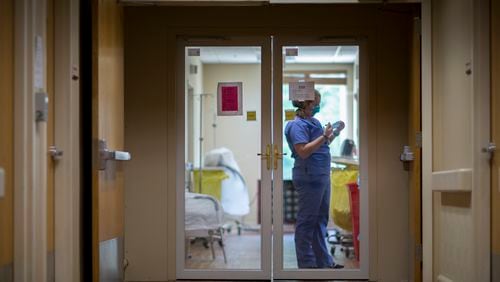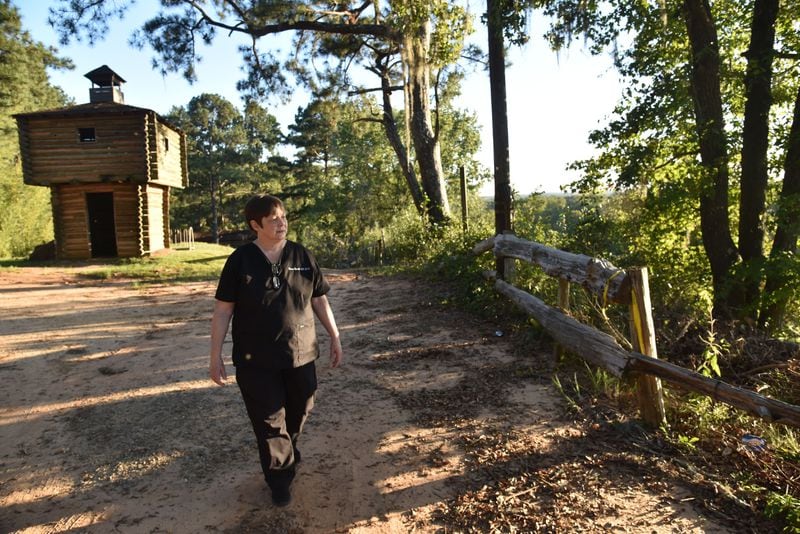People in rural Georgia and nationwide are more likely to die early than those in urban areas, and the long-term trend got worse during the pandemic, according to a multi-year study released Tuesday by the U.S. Centers for Disease Control and Prevention. The Southeast’s outcomes were worst of all, the study’s authors said.
The growing disparity is more remarkable because COVID-19 deaths weren’t included in the data. Instead, the effects of rural scarcities and isolation became even more dangerous for people facing a range of health problems, the authors said.
The study, which is ongoing and released about every five years, looked at deaths that occurred at ages younger than the national average, and that were probably preventable. They looked at those early, preventable deaths from the five top causes: heart disease; cancer; unintentional injury; stroke; and chronic lower respiratory disease which includes chronic bronchitis, emphysema, and asthma.
Unintentional injuries include drug overdoses, which are on the rise in both rural and urban communities in Georgia. They also include deaths from car crashes, drowning, falls and gunshots.
The overall trends varied for each cause of death over the long term. But in all cases, the outcomes remained worse for rural areas than for urban.
These are people that likely didn’t have to die when they did, Macarena Garcia, CDC’s senior health scientist at its Office of Rural Health, told The Atlanta Journal-Constitution. Governments, organizations and individuals can save lives if they use the data well, Garcia said.
Garcia said COVID-19 deaths were not included because there is no historical data to assess trends over time. But the impact of the pandemic has been staggering on people’s health and well-being.
About 15% of the U.S. population, or about 46 million people, live in rural areas. In Georgia, close to 17% of residents, or nearly two million, live in rural counties and 83%, or close to nine million, live in urban counties. For the study, rural counties were defined as having a population of under 50,000 people.
Residents in rural areas tend to be older, poorer and more sick than urban residents. They have higher rates of obesity and cigarette smoking and tend to be less physically active, according to the CDC.
Structural problems like lack of doctors, access, health insurance and broadband internet service are part of the problem, Garcia said.
It doesn’t have to be that way, the scientists said.
“The hope is that public health administrators, either regional or state, or even at the county level would look at this data, and would try to understand why their particular data looks that way,” comparing to neighboring areas that did better, Garcia said.
“I want to know what policies they’re enacting. I want to know what kind of health care access they’re providing to their rural residents. And by knowing and engaging and talking, we’re able to understand what’s working,” Garcia said.
Jessica Jones, owner of a pharmacy in Fort Gaines, sees overwhelming challenges to health care in this rural area in southwest Georgia on a daily basis.
“There are so many needs,” said Jones who owns the only pharmacy in Clay County, which is also home to only one physician. “There are transportation needs. There is a huge need for more physicians. But there’s also so much more. There needs to be more resources, more social services help.”
She said some of her patients can’t afford co-pays for critically important medications. Some patients with Medicare qualify for a low-income subsidy to help pay for prescription drugs but they haven’t filled out the paperwork. Some patients have no way of picking up their medications.
She says tries to do what she can: setting up a makeshift office in her pharmacy twice a week to help patients fill out paperwork. She has a driver who delivers medication to patient’s homes. She said her patients show their appreciation, including a regular who often brings her home-cooked plate of chicken, collard greens and cornbread.
Credit: TNS
Credit: TNS
But she’s stretched thin, dipping into her reserves to help cover some co-pays, working long days, and barely breaking even.
In the past decade, 10 rural hospitals in Georgia have closed their doors or given up full hospital services, according to the National Conference of State Legislatures.
These mounting closures are worsening the disparity in health access between rural and urban areas. An AJC examination of a dozen hospitals that closed down in Georgia in recent years showed that more often than not, they were in counties with a household income lower than the state’s average.
The lack of access to care extends to local doctor’s offices as well. According to 2023 estimates by the Georgia Alliance of Community Hospitals, 78 of the 159 counties in Georgia have no obstetrician/gynecologist; 63 have no pediatrician.
According to the Georgia Board of Healthcare Workforce’s latest data in 2020, nine counties have no doctor at all.
Every county has a public health office, where a health professional like a nurse may be staffed to help residents. But their duties are limited to certain types of preventive care, like vaccinations or screenings.
Georgia Department of Public Health officials declined to comment on the rural health gap for this story as they had not yet seen the study.
Except for unintentional injuries, health outcomes for the top five leading causes of premature deaths have improved or appeared level in urban parts of Georgia over the past decade. But where they improved, rural areas improved less, or never caught up.
Compared to Georgians living in urban areas, people in rural Georgia are nearly five times as likely to die preventable, early deaths due to cancer, and twice as likely to die from chronic lower respiratory disease. The cause of excess deaths in the study with the smallest disparity was strokes, with rural residents 7% more likely to die preventable, early deaths of stroke in 2022 than urban residents.
Rural scarcities matter for all of those causes, including stopping cancer early, Garcia said.
“Sometimes people have to drive two, three hours to the nearest center that provides specialty care,” said Garcia. “So that means people go without preventive services. People in rural areas likely have lower rates of screening and certainly have less access to treatment.”
It’s not just doctors who are scarce. Health insurance is less prevalent, too.
Rural Georgians are less likely to have job-based health insurance, according to the nonprofit Georgians for a Healthy Future. And in Georgia, uninsured poor adults are not automatically covered by Medicaid, as the state is one of 10 mostly in the South that remain opposed to full Medicaid expansion. That lack of coverage “absolutely (is) one of the predictors and one of the bigger problems,” Garcia said.









